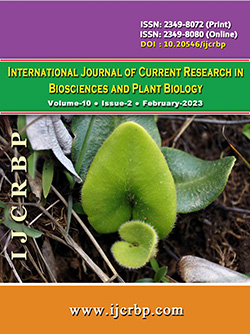 |
Online ISSN : 2349-8080 Issues : 12 per year Publisher : Excellent Publishers Email : editorinchiefijcrbp@gmail.com |
2Forest and Rural Development (FODER), Po.Box :11417, Yaounde, Cameroon
3Institute of Agricultural Research for the Development (IRAD), BP. 592, Abong-Mbang, Cameroon
4Catholic University Institute of Bertoua (UCAB), BP. 40 Bertoua, Cameroon
In the cities of Cameroon, Non-Timber Forest Products (NTFPs) more precisely spice plants, occupy a place of choice for the well-being of the population. NTFPs such as Irvingia gabonensis, Ricinodendron heudelotii and Tetrapleura tetraptera, which are among the most consumed in the city of Bertoua. The objective of this study was to make a socio-economic diagnosis of the state of these NTFPs. A questionnaire was administered to 500 people, including 18 collectors, 22 wholesalers, 165 retailers and 295 consumers in the sub-districts of Bertoua 1, Bertoua 2 and Mandjou. We found that the female gender was predominantly represented in all categories of actors (68-94%). Fruits/seeds represent the most used parts of these NTFPs (98-99%). The uses of these NTFPs are mainly for food and pharmacological (40-80% depending on the species). The mode of use is mainly decoction especially in soup (95-99%). The main constraints linked to the commercialization of these NTFPs are the seasonality of production for collectors, the price variation for retailers on the market, and the lack of customers for traders. The satisfaction levels of wholesalers, retailers and collectors are divided between the difficulties encountered during marketing and the speed of sale of the different species. This study confirms the importance of spice plants for the well-being of households. For a sustainable management of spice plants in Bertoua and its periphery, the integration between the actors, the economy and the preservation of natural resources should be at the centre of any forestry policy.
Value chain
